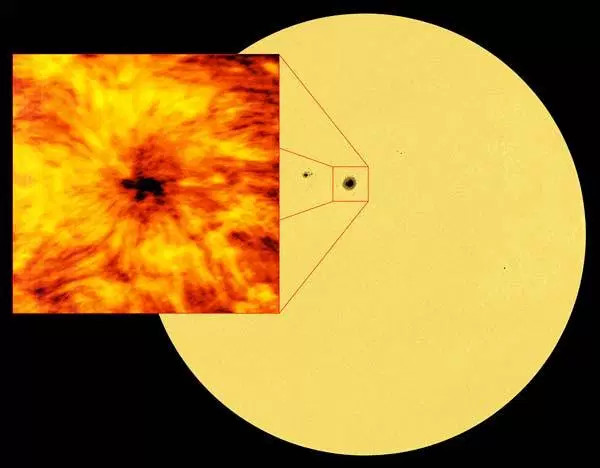'Black turtle' is twice as big as the Earth on the Sun.
The ALMA telescope reveals new details from the first observations of the Sun, including a giant black streak resembling a turtle swimming across the celestial surface.
The new image from the Atacama Large Millimeter / submillimeter Array (ALMA) telescope in Chile shows a black streak of tortoise-like shape on the Sun twice the size of Earth, Sun reported.

The black streak of the Sun's tortoise is twice as big as the Earth.(Photo: NASA).
Although ALMA is designed to observe the faintest objects in the distant universe, researchers have begun to use this powerful tool to understand the Sun over a 30-month period from 2014. it allows them to capture wavelengths of light with millimeters of accuracy emanating from the Sun's chromatogram, located just above the observable surface.
The black streak image of a giant tortoise was taken on December 18, 2015, using a No. 6 receiver at a wavelength of 1.25 millimeters.
"We are used to observing the Sun under visible light, but that can only tell us a lot about the active surface and the energetic atmosphere of the nearest star , " Tim Bastian, Astronomers at the National Radio Astronomical Observatory in Charlottesville, Virginia, USA, said. "In order to comprehensively understand the Sun, we need to study it through the entire electromagnetic spectrum, based on a detailed millimeter observation of ALMA".
Black streaks are a relatively cold area on the Sun's surface, so darker than the surrounding areas. The Sun operates over a period of 11 years with a high number of black streaks and storms during a period of intense movement, followed by a quiet period with few black streaks and fire storms.
- Discover the world's longest-lived turtle
- Monsters themselves turtles, strange bird heads of Vietnam
- Archaeologists discovered the ancestral skeleton of a turtle
- 13 facts about turtles that few people know about
- Japan discovered 70 million-year-old fossil turtle
- Decoding mistakenly thought that the black hole of the universe is
- Turtle tools can be national treasures
- What if a black-sized black hole attacked the Earth?
- The 100-year-old female turtle left home for more than 10km to find a partner
- For the Sword Lake turtle to breed with Chinese turtles
- The specimen of the Sword Lake Turtle was brought to Ngoc Son Temple
- Catching 'descendants' of Ho Guom Turtle?
 Van Allen's belt and evidence that the Apollo 11 mission to the Moon was myth
Van Allen's belt and evidence that the Apollo 11 mission to the Moon was myth The levels of civilization in the universe (Kardashev scale)
The levels of civilization in the universe (Kardashev scale) Today Mars, the sun and the Earth are aligned
Today Mars, the sun and the Earth are aligned The Amazon owner announced a secret plan to build a space base for thousands of people
The Amazon owner announced a secret plan to build a space base for thousands of people